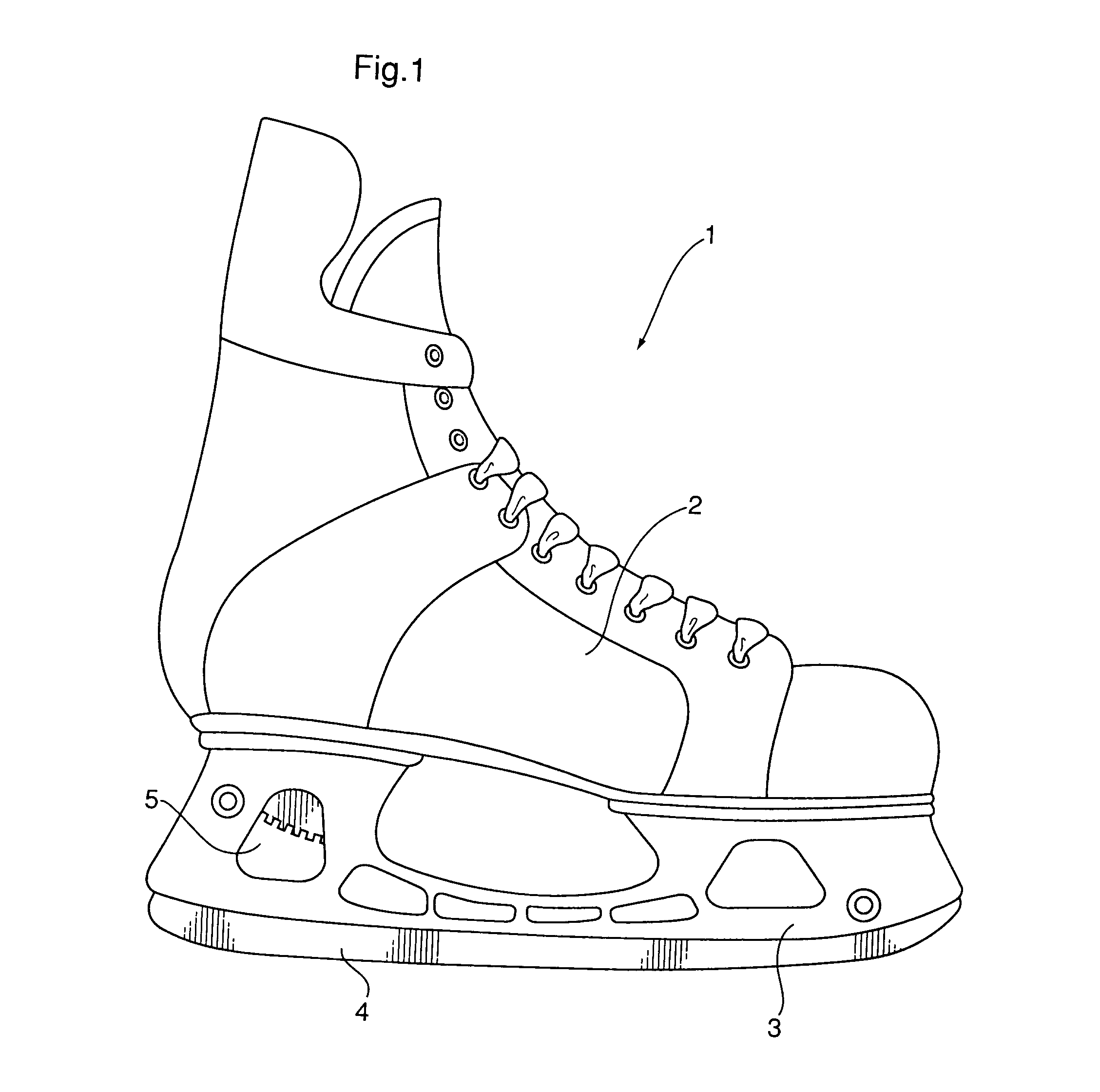Rotary retention latch for replaceable skate blade systems
a technology of rotary retention latches and skate blades, which is applied in the direction of skates, snowboard bindings, skating parts, etc., can solve the problems of substantial removal and fastening difficulties, relatively heavy and therefore expensive, and the metal portion of the skate will wear out before the boot portion, so as to enhance the skating bio-mechanics and distinguish the appearance
- Summary
- Abstract
- Description
- Claims
- Application Information
AI Technical Summary
Benefits of technology
Problems solved by technology
Method used
Image
Examples
Embodiment Construction
[0022]Referring to FIG. 1, a replaceable blade ice skate assembly (1) is substantially constructed from a boot (2), a holder (3) adapted to be mounted to the boot and a downward facing blade system (4). The holder (3) is styled to include at least one aesthetic aperture (5). It will be appreciated that this aperture could also have non-aesthetic functions, such as affecting the flexibility of the holder.
[0023]FIGS. 2 and 3 illustrate a flexible replaceable blade system that consists of a downward facing blade system (4) that includes a rocker (10) that is configured with a first defined curvature along its lower ice-contacting surface and incorporates a front end (12) and a rear end (11) and a flexible replaceable blade (6). The rocker front end (12) is adapted to be immovably attached to the holder (3) via riveting, bolting or similar fastening means and is configured with a toe receiving area (13). The rocker front end (12) is configured with a pivot joint (14) which is adapted to...
PUM
 Login to View More
Login to View More Abstract
Description
Claims
Application Information
 Login to View More
Login to View More - R&D
- Intellectual Property
- Life Sciences
- Materials
- Tech Scout
- Unparalleled Data Quality
- Higher Quality Content
- 60% Fewer Hallucinations
Browse by: Latest US Patents, China's latest patents, Technical Efficacy Thesaurus, Application Domain, Technology Topic, Popular Technical Reports.
© 2025 PatSnap. All rights reserved.Legal|Privacy policy|Modern Slavery Act Transparency Statement|Sitemap|About US| Contact US: help@patsnap.com



